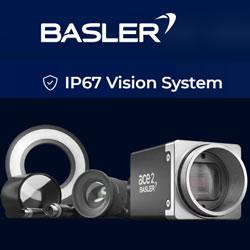MorpHex
New Computer Vision Project Can Solve reCAPTCHAs With Over 99% Accuracy
A World Of Hardware Startups
Raspberry Pi Compute Module
$99 MinnowBoard MAX With Intel Bay Trail-I SoC
Evolving Soft Robots With Multiple Materials
Flexible Muscle-Based Locomotion for Bipedal Creatures
DARPA Begins Phase One of VTOL X-Plane Program
Soft Robotic Fish
SimpleCV
Spherical Parallel Manipulators
Robot Launch 2014 Startup Competition
Google Project Tango
Timo Boll vs. KUKA Agilus Robot
Tunzelbots
Records 1411 to 1425 of 1669
First | Previous | Next | Last
Featured Product

Basler 3D Vision Solutions for Robotics and Warehouse Automation
Robotics and Automation - Featured Company

